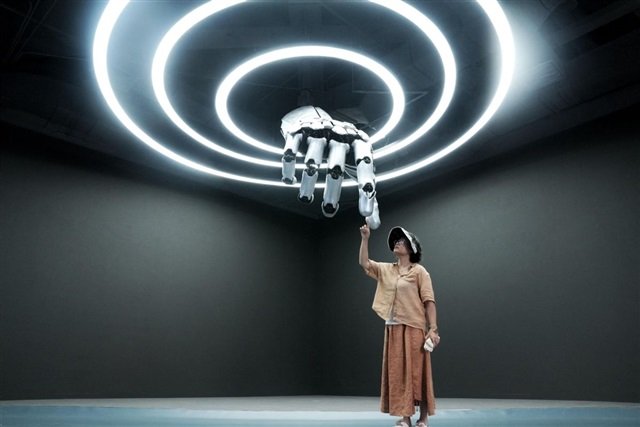Business
IBM Addresses the AI Adoption Gap with “Let’s create smarter business”

New brand campaign features voice of seven-time Formula 1 World Champion and Scuderia Ferrari HP driver Lewis Hamilton in television spots
ARMONK, N.Y., Sept. 3, 2025 /PRNewswire/ — IBM (NYSE: IBM) today launched its newest brand campaign, “Let’s create smarter business.” Designed for the new era of enterprise AI, “Let’s create smarter business” spotlights IBM’s innovative approach to the application of emerging technologies as a means to make businesses more productive, efficient and agile.
The multi-platform campaign brings to life the many challenges and pressures business leaders face as they move from experimental AI pilots to real-world solutions that drive organization-wide value. Developed by the IBM Brand Marketing team and Ogilvy, “Let’s create smarter business” nods to the company’s long-standing commitment to progress and innovation on behalf of clients and partners.
From service and support to the many operating systems at the heart of how a business runs, a series of three new broadcast ads underscore the potential for expertly applied AI, hybrid cloud and quantum to change how work gets done.
Filmed by Adam Heshemi for Reset, the three broadcast ads feature voiceover by seven-time Formula 1 World Champion and Scuderia Ferrari HP driver Lewis Hamilton. As the Official Fan Engagement and Data Analytics Partner of Scuderia Ferrari HP, IBM recently introduced a completely redesigned Scuderia Ferrari mobile app that combines data and AI technologies to reimagine the digital fan experience. These same technologies are used by IBM clients across industries to achieve enhanced customer experiences, help their employees reach new levels of productivity and make more informed, data-driven business decisions.
“‘Let’s create smarter business’ communicates our ability to equip business leaders with the right perspective and products that will bridge the AI adoption gap, and deliver meaningful technology-driven gains that relieve the pressure of unmet expectations,” said Jonathan Adashek, Senior Vice President, Marketing and Communications, IBM. “This is more than a campaign. It’s a philosophy that IBM is embracing to transform companies into smarter businesses.”
“‘Let’s create smarter business’ is a fresh articulation of what IBM does best: understanding the real pressures business leaders face, and helping them turn complexity into clarity and technology into lasting impact,” said Liz Taylor, Global Chief Creative Officer, Ogilvy. “Creatively, we wanted to keep it smart, simple and charming. There’s a quiet cheekiness to it. We’re speaking into the disillusionment that’s crept into the AI conversation, and making it clear that IBM sees exactly what’s going on – irony and all – and still knows how to build what matters.”
“Let’s create smarter business” is a strategic refresh and next evolution of “Let’s create,” which launched in 2022. The campaign also marks the return of iconic IBM brand equities such as the blue bars. The spots will debut during the US Open and run throughout 2025, including broadcast, digital out-of-home, print, web, social and digital video.
About IBM
IBM is a leading provider of global hybrid cloud and AI, and consulting expertise. We help clients in more than 175 countries capitalize on insights from their data, streamline business processes, reduce costs and gain the competitive edge in their industries. Thousands of governments and corporate entities in critical infrastructure areas such as financial services, telecommunications and healthcare rely on IBM’s hybrid cloud platform and Red Hat OpenShift to affect their digital transformations quickly, efficiently and securely. IBM’s breakthrough innovations in AI, quantum computing, industry-specific cloud solutions and consulting deliver open and flexible options to our clients. All of this is backed by IBM’s long-standing commitment to trust, transparency, responsibility, inclusivity and service. Visit www.ibm.com for more information.
Media Contact
Jessica Chen
IBM Communications
jessicachen@ibm.com
SOURCE IBM
Business
Imperfect AI creates more editing business opportunities – DIGITIMES Asia
Business
OpenAI forecasts $115 billion business spend on AI rollout by 2029

OpenAI has elevated its cash burn forecast this year through 2029 to a total of $115 billion. The company’s recent cash burn expectation is also $80 billion higher than it previously projected.
According to a report by The Information, the surge in cash burn for OpenAI comes at a time when it’s ramping up spending to power the artificial intelligence behind its popular ChatGPT chatbot. The tech firm has also become one of the world’s biggest renters of cloud services.
OpenAI plans to develop its chips and data center facilities
The source revealed that the AI company expects to burn over $8 billion this year. OpenAI had forecasted early in the year that it would only burn around $1.5 billion.
According to the report, OpenAI doubled its cash burn expectations for 2026 to more than $17 billion, surpassing its previous forecast of $10 billion. The firm also projects a $35 billion cash burn in 2027 and $45 billion in 2028.
The FT also disclosed on Thursday that the Silicon Valley startup plans to develop its data center server chips and facilities to power its technology. According to the report, the initiative aims to control the tech company’s surging operational costs.
The firm relies on substantial computing power to train and run its systems. The company’s CEO, Sam Altman, has also advocated the need for increased computing power to accommodate the growing demand for AI products such as ChatGPT.
Deloitte’s 2025 AI infrastructure Survey revealed that the energy demands of AI are straining traditional power grids. According to the study, 79% of executives anticipate increased power demand through the next decade, with grid stress emerging as a top challenge.
The source added that U.S. semiconductor giant Broadcom will partner with OpenAI to produce the first set of chips and start shipping them by next year. Also, OpenAI allegedly plans to use the chips internally rather than selling them for external clients.
Broadcom’s CEO, Hock Tan, hinted the company had partnered with an undisclosed customer that committed to $10 billion in orders. During a call with analysts, he revealed the firm had secured a fourth customer to boost its custom AI chip division. Tan stated the collaboration with OpenAI has enhanced its growth outlook for fiscal 2026 by generating immediate and substantial demand.
OpenAI partners with Broadcom to produce chips
OpenAI also partnered with Broadcom and Taiwan Semiconductor Manufacturing Co. (TSMC) nearly a year ago to develop its first in-house chip. The firm was also planning to add AMD chips alongside Nvidia chips to meet its surging infrastructure demands.
OpenAI revealed in February plans to reduce its reliance on Nvidia’s chips. The firm said it will finalize the design of the new chip in the next few months and then send it to TSMC for fabrication. OpenAI’s initiative also builds on its ambitious plans to increase its semiconductor production at the Taiwanese company next year.
According to the report, OpenAI hopes to use the new chips to strengthen its negotiating leverage with other chip suppliers, including Nvidia. The company’s in-house team, led by Richard Ho, will design the chip to produce advanced processors with broader capabilities with each new iteration.
OpenAI collaborated with Oracle in July to launch a 4.5-gigawatt data center. The initiative also complements the firm’s $500 billion Stargate project, including investments from Japanese firm SoftBank Group. The tech giant has also collaborated with Google Cloud to supply computing capacity.
Get $50 free to trade crypto when you sign up to Bybit now
Business
AI company Anthropic to pay authors $1.5 billion in landmark settlement

Big numbers often get thrown around in the aftermath of legal battles, as judges hand down judgements—or attorneys arrange settlement amounts—in the tens, or hundreds, of millions of dollars. Still, even jaded legal observers can occasionally run into a genuinely daunting number while parsing this stuff. Like, say, the $1.5 billion settlement that AI company Anthropic has agreed to pay in the ongoing class-action suit against it, launched by authors who said the company infringed on their copyrighted works by feeding them as training data to its “AI assistant” Claude. Sure, parts of that sum (calculated at $3,000 per work for a staggering number of works, and with its first $300 million installment due just five days after the settlement is approved) might potentially vanish in a puff of future bankruptcy. But it’s still the “largest publicly reported copyright recovery in history,” according to legal documents from the authors’ attorneys.
-

 Business1 week ago
Business1 week agoThe Guardian view on Trump and the Fed: independence is no substitute for accountability | Editorial
-
Tools & Platforms4 weeks ago
Building Trust in Military AI Starts with Opening the Black Box – War on the Rocks
-

 Ethics & Policy1 month ago
Ethics & Policy1 month agoSDAIA Supports Saudi Arabia’s Leadership in Shaping Global AI Ethics, Policy, and Research – وكالة الأنباء السعودية
-

 Events & Conferences4 months ago
Events & Conferences4 months agoJourney to 1000 models: Scaling Instagram’s recommendation system
-

 Jobs & Careers2 months ago
Jobs & Careers2 months agoMumbai-based Perplexity Alternative Has 60k+ Users Without Funding
-

 Education2 months ago
Education2 months agoVEX Robotics launches AI-powered classroom robotics system
-

 Podcasts & Talks2 months ago
Podcasts & Talks2 months agoHappy 4th of July! 🎆 Made with Veo 3 in Gemini
-

 Funding & Business2 months ago
Funding & Business2 months agoKayak and Expedia race to build AI travel agents that turn social posts into itineraries
-

 Education2 months ago
Education2 months agoMacron says UK and France have duty to tackle illegal migration ‘with humanity, solidarity and firmness’ – UK politics live | Politics
-

 Podcasts & Talks2 months ago
Podcasts & Talks2 months agoOpenAI 🤝 @teamganassi



